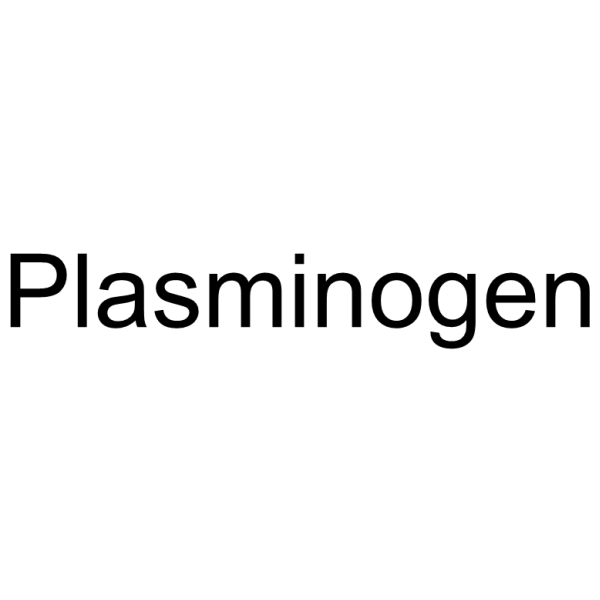9001-91-6
| Name | carnosine |
|---|---|
| Synonyms |
2-[(3-Aminopropanoyl)amino]-3-(1H-imidazol-4-yl)propanoic acid
Histidine, β-alanyl- b-Alanylhistidine β-Alanylhistidine carnosine N-(3-Aminopropanoyl)histidine MFCD01457370 MFCD00131791 |
| Description | Plasminogen is a secreted protein that upon cleavage by urokinase plasminogen activator (uPA) or tissue plasminogen activator (tPA) is converted to plasmin, a broad range protease capable of cleaving fibrin and other ECM components. Plasminogen also is a proinflammatory regulator that accelerates the healing of acute and diabetic wounds. Plasminogen can be used in studies of wound healing, inflammation and hypoplasminogenemia[1][2]. |
|---|---|
| Related Catalog | |
| In Vivo | Plasminogen (plg) (2 mg/per; i.v.; single daily for 16 days) accelerates the healing of burn wounds in WT mice[1]. Plasminogen (plg) (2 mg/per; i.v.; single daily for 16 days) enhances the expression of IL-6 and augments the activation of STAT3 in wounded skin of both WT and plg-deficient mice[1]. Plasminogen (plg) (2 mg/per; i.v.; single daily for 24 days) improves the healing of burn wounds in a mouse model of diabetes[1]. Animal Model: WT mice (plg-heterozygous (plg+/-)) mice, plg+/- and plg-deficient (plg-/-) mice (C57BL/6 background; 8- to 10- week-old; burn-wound model)[1]. Dosage: 2 mg/per Administration: Intravenous injection; single daily for 16 days. Result: Showed a significantly faster healing speed than control group at day 6, and the time to healing (ie, the scab falling off) was also approximately 2 days earlier than in the control group. Promoted epithelium layer fused to reepithelialize the wound completely, and only a small scab remained lightly attached above the wound when at day 11. Enhanced the level of IL-6 in the wounds of both WT and plg-deficient mice, and increased the pSTA T3 level in the wound. Animal Model: Genetically diabetic mice (C57BLKS db/db; at least 10 weeks old; with a minimal blood glucose level of 15 mM) and control heterozygous littermates (C57BLKS db/+; at least 10 weeks old; with a minimal blood glucose level of 7.8 mM)[1]. Dosage: 2 mg/per Administration: Intravenous injection; single daily for 24 days. Result: Showed time to healing (ie, the scab falling off) was significantly earlier (approximately 3 days) than the control group. Accelerated the injured epithelium layer and the underlying tissue healed. (the front of the epithelium layer in the control group had barely fused and was covered by a scab. In addition, the tissue underneath the scab was inflamed). |
| References |
[2]. Keragala CB, et al. Plasminogen: an enigmatic zymogen. Blood. 2021 May 27;137(21):2881-2889. |
| Density | 1.4±0.1 g/cm3 |
|---|---|
| Boiling Point | 656.2±55.0 °C at 760 mmHg |
| Molecular Formula | C9H14N4O3 |
| Molecular Weight | 226.232 |
| Flash Point | 350.7±31.5 °C |
| Exact Mass | 226.106583 |
| LogP | -2.17 |
| Vapour Pressure | 0.0±2.1 mmHg at 25°C |
| Index of Refraction | 1.591 |
| Storage condition | 2-8°C |
| Personal Protective Equipment | Eyeshields;Gloves;type N95 (US);type P1 (EN143) respirator filter |
|---|---|
| RIDADR | NONH for all modes of transport |
